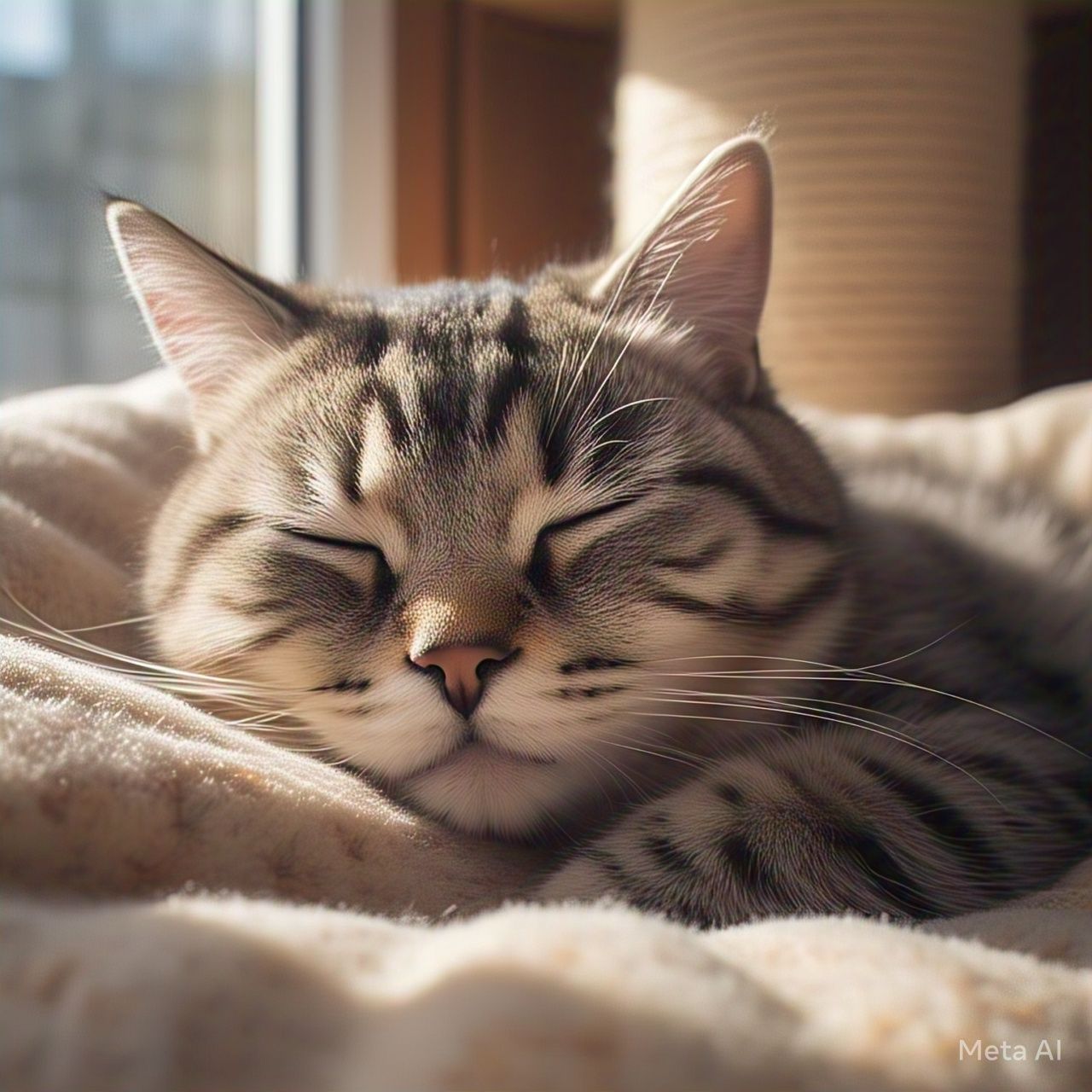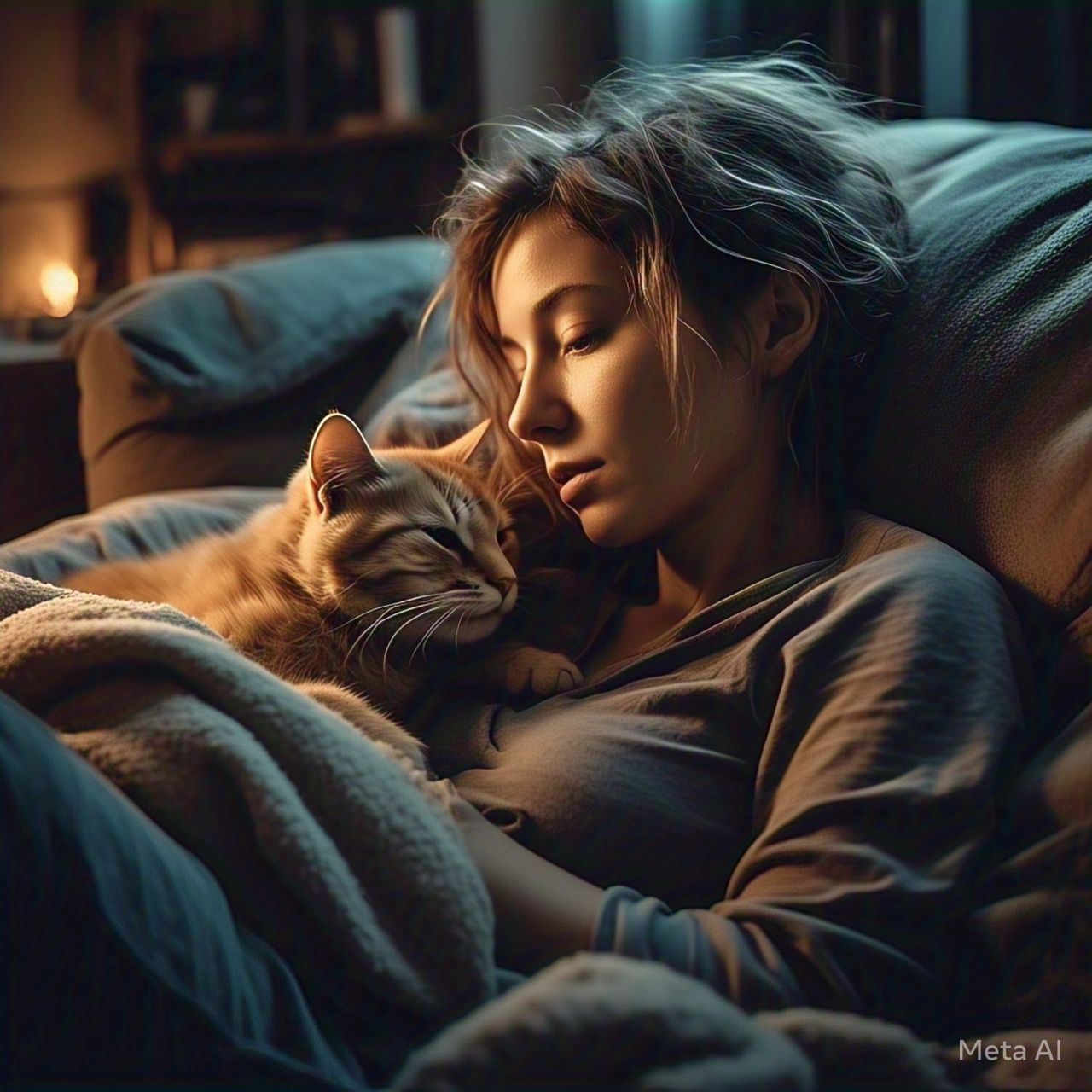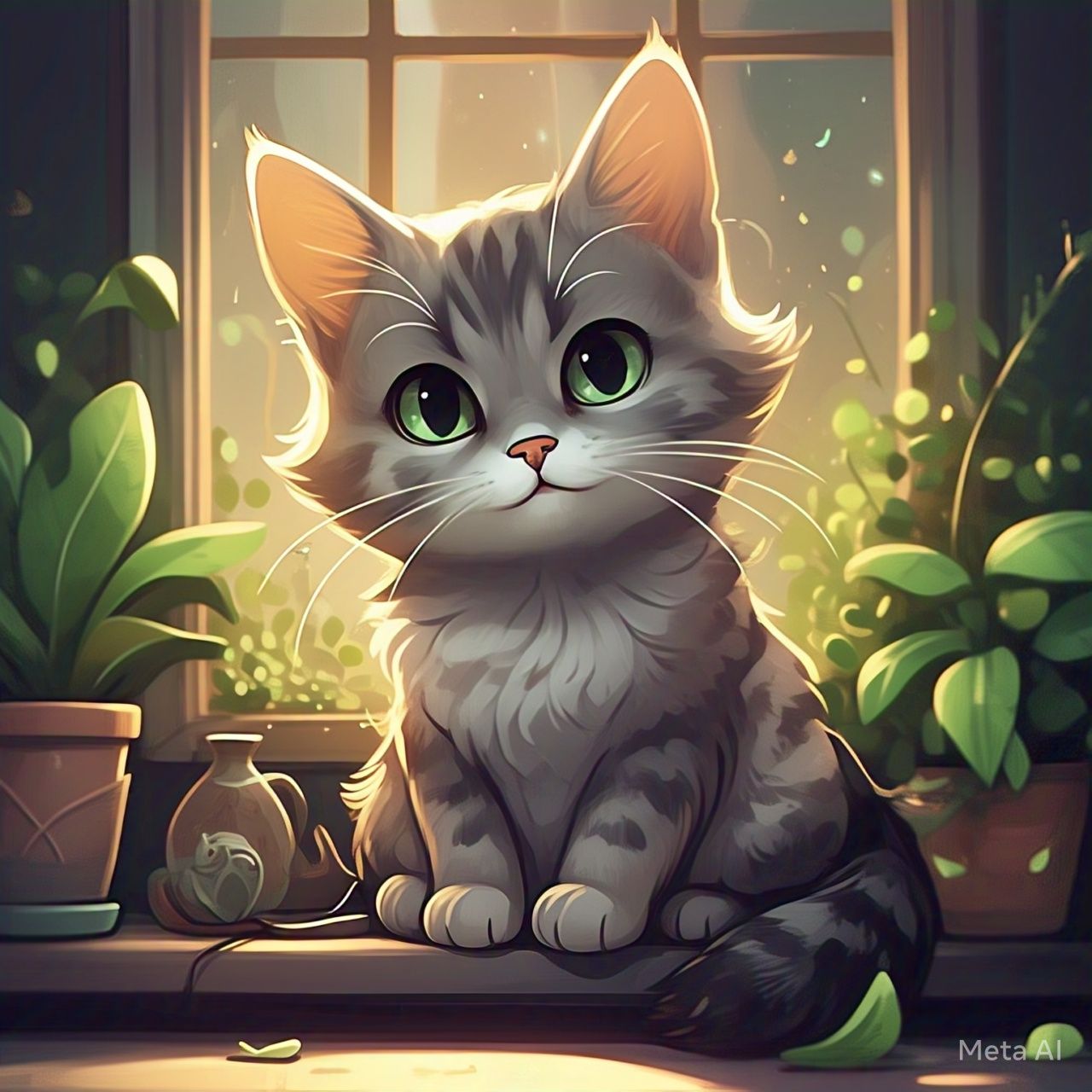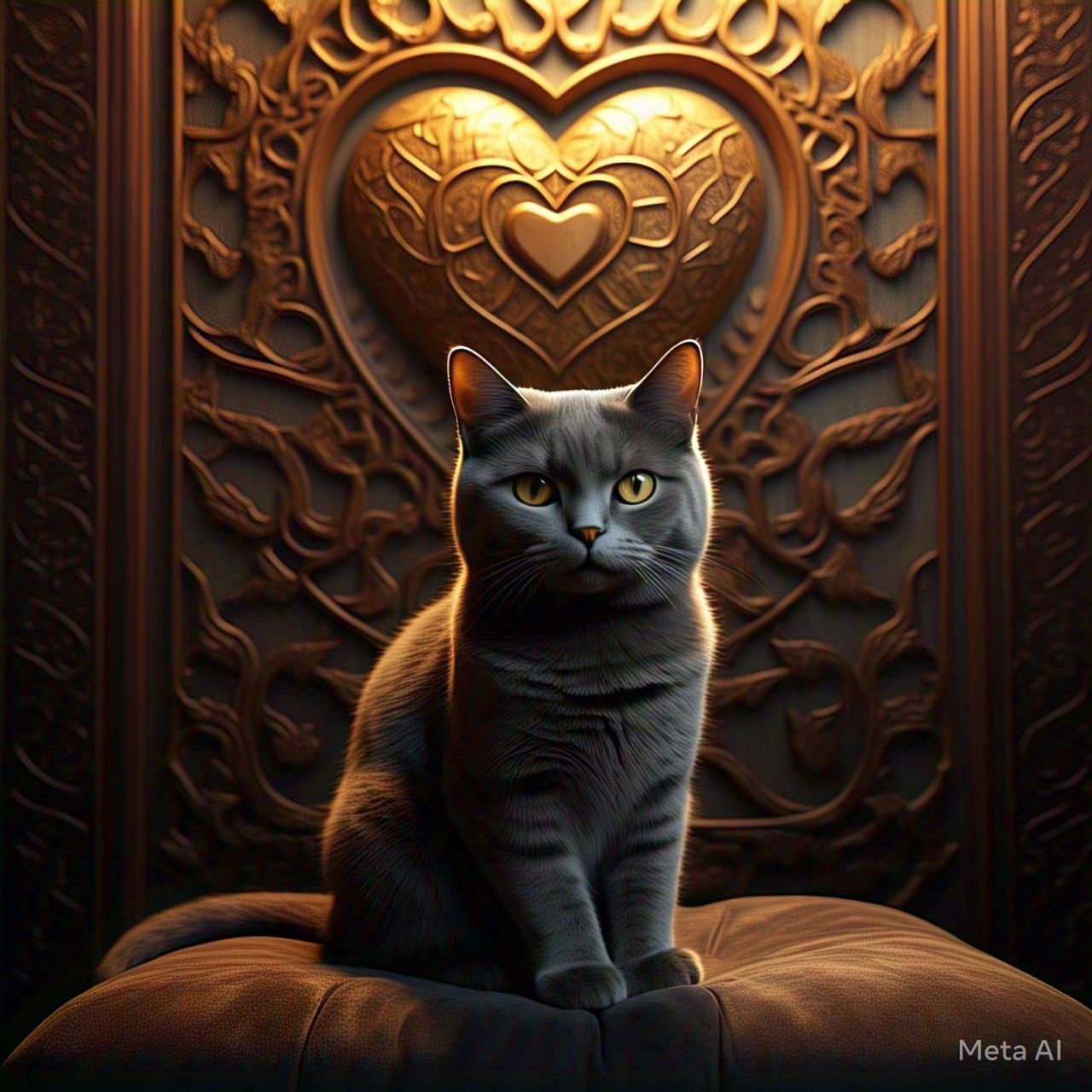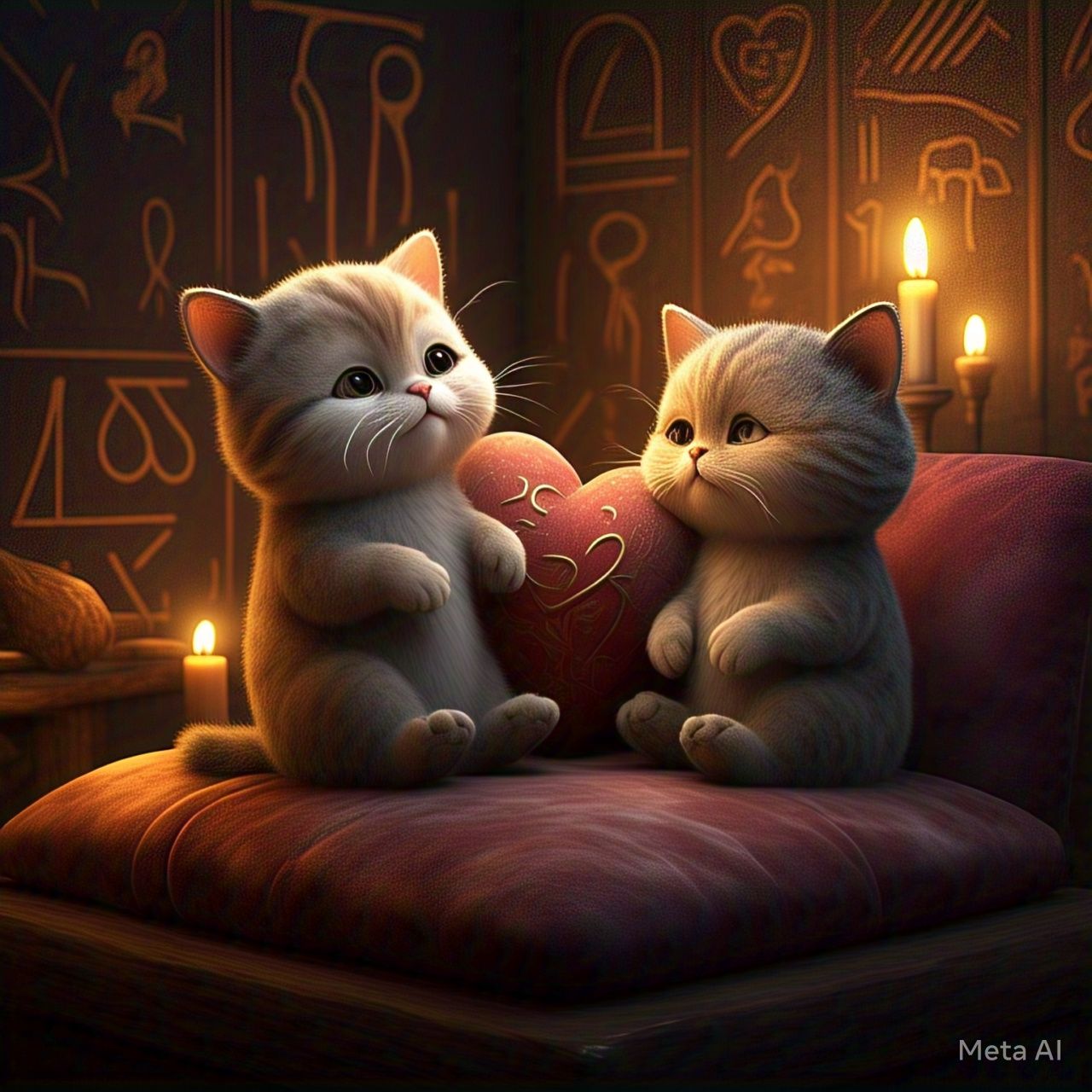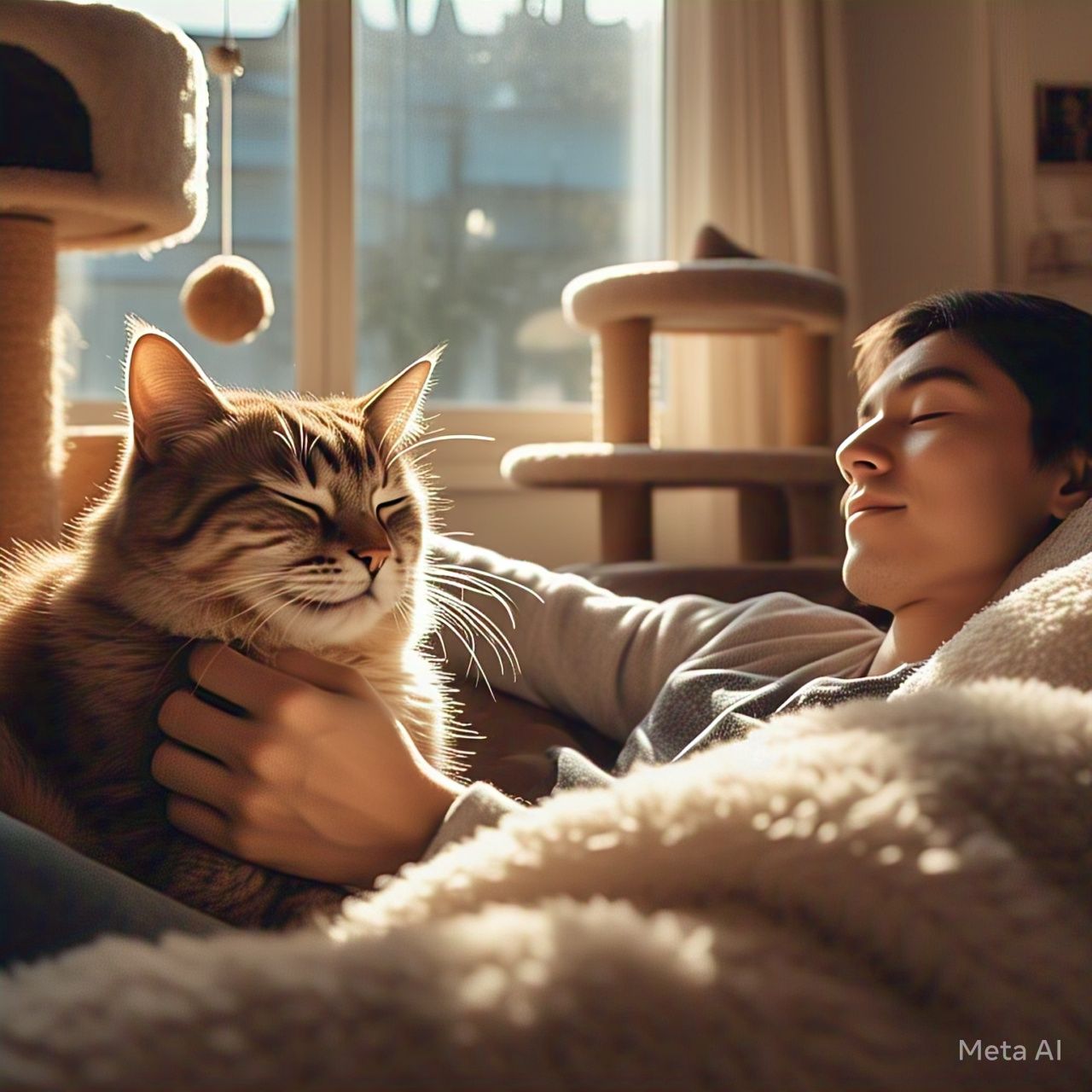Cats, often known for their independent nature and occasional aloofness, have a long history of surprising their human companions with acts of bravery, loyalty, and love. Though their often mysterious behavior may give them an air of mystery, there’s no denying that cats have the capacity for profound impact on the lives of those they touch. For centuries, these agile, sharp-eyed creatures have not only been beloved pets but also heroes in moments of crisis.
From the streets of bustling cities to quiet rural towns, countless stories of cats saving lives have captured the hearts of people around the world. These tales are not just about animals performing courageous acts but about the unspoken bond that exists between humans and their feline companions. Cats are more than just pets; they are guardians, protectors, and silent heroes who often go unnoticed but whose actions speak volumes.
This article delves into some of the most unforgettable and inspiring tales of cats who have saved lives, showcasing their incredible ability to comfort, protect, and, at times, even perform life-saving feats that seem nothing short of extraordinary. These stories remind us that love, loyalty, and heroism are not limited to the realm of humans, but can also be found in the feline species. Through their actions, these remarkable cats have not only saved lives but also stolen the hearts of those they have come to protect.
The Unseen Guardians – Cats Who Saved Their Owners from Danger
When we think of life-saving heroes, we often imagine firefighters, doctors, or even brave soldiers who risk their lives to protect others. Rarely do we consider the small, often underestimated creatures in our own homes—the cats. Yet, these furry companions have, on many occasions, stepped up in moments of crisis, saving their owners from harm and danger when help seemed impossible.
Cats are known for their keen instincts, sharp reflexes, and intelligence, all of which make them natural protectors. Though not often lauded as life-saving heroes, there are numerous tales of cats who have acted decisively in situations where their owners’ lives were at risk. Whether it was alerting their owners to a fire, detecting an intruder, or even saving them from a medical emergency, these cats have proven that heroism comes in all shapes and sizes.
One of the most remarkable qualities of cats is their ability to sense danger, sometimes before humans even realize that there’s a threat. Cats are notorious for their heightened senses—especially their acute sense of smell, sharp hearing, and excellent vision—allowing them to detect even the slightest changes in their environment. This can be invaluable in situations where an emergency is looming, and their early warnings can be the difference between life and death.
Cats and Their Senses of Danger
Many of the most famous life-saving tales of cats involve them sensing something amiss before their human companions could even detect the danger. For example, in 2013, a cat named Tara from California became a national hero when she saved her young owner, Jeremy Triantafilo, from a dog attack. The dog had attacked Jeremy, pulling him to the ground, but Tara quickly sprang into action. With remarkable speed and strength, she charged at the dog, scaring it off and preventing it from causing any further harm. This brave cat’s swift intervention likely saved Jeremy from more serious injuries, if not worse.
Another incredible story involves a cat named Pudding, who played a critical role in saving her owner from a potential house fire. Pudding had been acting strangely for several hours, repeatedly pacing and meowing loudly, as if trying to alert her owner to something. When the owner finally investigated, she discovered that a fire had started in the kitchen. If it weren’t for Pudding’s persistent actions, the fire could have easily spread unnoticed, causing significant damage or even a devastating loss. Pudding’s sense of urgency and her owner’s eventual realization of the danger led to a timely escape from the house, and the cat’s behavior undoubtedly saved lives.
These types of stories are not isolated incidents. Cats have demonstrated an uncanny ability to alert their owners to danger, whether that danger is physical or environmental. Whether it’s sensing smoke from a fire, an intruder, or even a natural disaster, cats have time and again shown that they can be life-saving guardians in moments of crisis.
Cats and Medical Emergencies
In addition to physical dangers, cats have also saved their owners from medical emergencies. There are numerous accounts of cats alerting their humans to health crises, such as heart attacks, strokes, and seizures. For example, a cat named Charlie, in Michigan, has been credited with saving his owner’s life when he sensed something was wrong during a routine evening at home. The woman was about to suffer a heart attack, but Charlie seemed to know it was coming. He began pacing around her and meowing insistently. The cat’s persistent behavior finally caught the woman’s attention, prompting her to go to the hospital, where she was diagnosed with a blocked artery. If Charlie hadn’t warned her, she could have suffered the heart attack without immediate medical attention, which could have been fatal.
Similarly, a cat named Tiger, from the UK, had a unique ability to detect seizures in his epileptic owner. On several occasions, Tiger would react long before the seizure occurred, by pawing at his owner or curling up next to him. His actions were often enough to alert the family to the impending seizure, giving them time to assist the owner and ensure his safety. Tiger’s incredible intuition and his bond with his owner saved him from several potentially life-threatening episodes.
It’s clear that cats have an innate ability to sense changes in their owners’ health and can act as emotional and physical lifeguards in times of crisis. Many of these medical miracles are still being reported today, and cat owners across the globe are grateful for the seemingly supernatural abilities their pets possess.
The Protective Instinct
Even when the threat is not directly physical or medical, many cats still exhibit an incredibly strong protective instinct. In some cases, this instinct drives them to defend their owners from emotional or psychological distress. Cats have been known to comfort their humans during times of grief or anxiety, providing companionship that can be a literal life-saver in tough emotional times. A sense of emotional well-being is vital to overall health, and cats’ ability to reduce stress, ease anxiety, and provide affection is often underrated. But when an individual is facing personal trauma, such as the loss of a loved one, a cat’s gentle presence can make all the difference.
One such example comes from a family in New York City, where a cat named Lily helped a woman navigate through severe post-traumatic stress disorder (PTSD) after she returned home from military service. Lily would always be by her side, providing a constant source of support and comfort. The simple act of Lily sitting with her human, purring, and offering her presence seemed to significantly lessen the woman’s anxiety. It’s difficult to quantify how a cat’s emotional intelligence can impact human health, but for many, the love and companionship of a cat can truly be life-saving.
The Unsung Heroes in Our Midst
These incredible stories of cats saving lives highlight an often overlooked aspect of the feline-human relationship. While dogs are traditionally regarded as man’s best friend, cats have proven time and again that they, too, can be dedicated protectors and lifesavers. Through their sharp instincts, their capacity for empathy, and their unyielding loyalty, cats have earned their place as unsung heroes in the stories of those they love.
As more tales like those of Tara, Pudding, Charlie, and Tiger emerge, it becomes increasingly evident that cats are not just creatures of comfort, but formidable guardians. Their ability to sense danger, save lives, and provide emotional support in times of need is unparalleled. The bond between humans and cats is deep, built on mutual respect and affection, and these unforgettable tales of bravery are a testament to just how strong that connection can be.
The Unseen Guardians – Cats Who Stole Hearts with Their Courageous Acts
In a world where every day brings new challenges and uncertainties, we often find that the most unlikely of heroes emerge from the most unexpected places. While dogs have long been celebrated for their heroic feats, cats—those elegant and sometimes elusive creatures—have quietly become unsung heroes in their own right. These stories demonstrate that cats, with their stealthy movements, incredible intuition, and unique bond with their humans, are not just companions but protectors, guardians, and life-saving heroes who act when least expected. These tales serve as a reminder of the power of the animal-human connection and how sometimes, love and protection come in the smallest of packages.
In this section, we will explore more remarkable instances of cats who have not only saved lives but also left an indelible mark on the hearts of the people they have touched. Their actions go beyond mere instinct—they show the profound and genuine relationships that can form between humans and their feline companions, as well as the extraordinary courage that cats possess when their humans are in danger.
The Tale of Scarlett: A Mother’s Love
One of the most unforgettable stories of a cat saving lives comes from the tragic yet inspiring tale of Scarlett, a stray cat living in Brooklyn, New York. In 1996, Scarlett became an unlikely hero when she saved her kittens from a burning building. The fire broke out in an abandoned building where Scarlett and her five kittens had been living. The flames quickly spread, and when firefighters arrived at the scene, they found Scarlett dragging her kittens, one by one, out of the burning building to safety.
Scarlett, despite suffering severe burns and injuries, never left her kittens behind. She showed an incredible instinct for protection, ensuring that each of her five kittens was rescued. The firefighter who first encountered Scarlett and her kittens recalled how she seemed to be trying to tell them that there were more kittens inside. Despite her injuries, Scarlett continued to drag each of her kittens out of the fire, rescuing them from certain death. By the time the fire was extinguished, Scarlett had managed to save all five of her kittens. Tragically, Scarlett herself did not survive the fire. However, her heroism did not go unnoticed. She became an international symbol of bravery, and her kittens were adopted into loving homes.
The story of Scarlett has inspired many and continues to serve as a testament to the selflessness and courage that animals can demonstrate in the face of danger. Scarlett’s actions are proof that even a small, seemingly defenseless creature can be an extraordinary hero when it comes to protecting those they love. Her tale has touched the hearts of people all over the world, and she remains a symbol of unconditional love and courage.
A Cat Named Toby Saves a Life in the Most Unexpected Way
Another remarkable story comes from a small town in the UK, where a cat named Toby saved his owner’s life in a way that no one could have predicted. Toby, a gentle and calm tabby, lived with his elderly owner, Margaret. One evening, while Margaret was enjoying a quiet night in, she suffered a stroke. As the stroke took hold, Margaret lost her ability to move and call for help. At this critical moment, Toby sprang into action.
Toby began meowing loudly and pawing at Margaret’s face, trying to rouse her. He didn’t stop there—he jumped onto the table, knocked over a glass of water, and created a commotion in hopes of drawing attention. His persistent behavior eventually caught the attention of Margaret’s neighbor, who heard the noise and came to check on her. The neighbor arrived just in time to call for emergency help, and Margaret was rushed to the hospital. Thanks to Toby’s actions, Margaret received immediate medical attention, which likely saved her life. Doctors later confirmed that if Margaret had not received help as quickly as she did, the consequences could have been much worse.
Toby’s incredible persistence in the face of danger demonstrated the depths of his loyalty to his owner. Unlike other animals, whose instincts may focus primarily on survival or self-preservation, Toby’s instinct to save Margaret was driven by his bond with her. He was more than just a cat; he was a protector, an unexpected hero whose actions proved that even the smallest of animals can make a huge difference.
The Hero Cat of the Highways: Saving a Life in the Blink of an Eye
The highway is often a place where danger lurks around every corner, and the unexpected can strike at any moment. For one motorist in Oregon, however, it wasn’t a human who came to the rescue when a potentially deadly situation unfolded—it was a cat. The story, though short and sweet, proves how a cat’s quick reflexes and sharp instincts can save lives when danger is just moments away.
It began one rainy afternoon when a driver, distracted by the downpour, failed to notice that another vehicle had swerved onto the wrong side of the road. The collision seemed imminent, and the driver braced for impact. Suddenly, just as the two vehicles were about to crash, the driver noticed a flash of motion near the road’s edge. A cat, whom the driver later identified as a local stray, darted out and positioned itself directly in front of the oncoming vehicle. The cat’s unexpected action caused the driver of the car to slow down in an attempt to avoid hitting the feline.
This split-second hesitation prevented a catastrophic accident, allowing both vehicles to avoid a head-on collision. In the aftermath, the cat quickly darted into the underbrush and disappeared. The driver, though shaken by the close call, could not stop thinking about the cat’s incredible timing and how, in just a moment of instinct, it had prevented disaster. While no one can say for certain whether the cat fully understood the danger, its reflexes were impeccable, and its actions ultimately saved lives.
Though the story of the highway hero cat may seem like an improbable coincidence, it highlights just how attuned cats are to their environments. Whether intentionally or not, this quick-thinking cat stepped in at the precise moment to avert a disaster. It is a testament to the unpredictable ways in which animals can act as protectors, even in the most unexpected situations.
Cats and Their Intuitive Abilities to Prevent Medical Emergencies
In addition to their ability to physically save their owners from dangerous situations, many cats have a remarkable ability to sense when their human companions are about to experience a medical emergency. Their uncanny ability to detect changes in their owner’s body chemistry or emotional state is nothing short of extraordinary. In fact, many stories have surfaced where cats have saved their owners from heart attacks, strokes, or seizures, not through direct action but by their ability to alert others or by providing critical comfort in times of need.
One notable story comes from a cat named Oreo, who lived with her elderly owner, Henry. Henry had a history of heart issues, and one morning, Oreo began acting strangely—meowing incessantly, pacing around the house, and even scratching at Henry’s chest. Oreo’s unusual behavior prompted Henry to take a trip to the doctor. It was there that the doctors discovered that Henry was on the verge of a heart attack. Had Oreo not alerted him, he might not have gone to the doctor that day, and the outcome could have been far more serious.
Oreo’s alertness to subtle changes in her owner’s health is a reminder of how cats are often in tune with their owners in ways that humans may not fully understand. Their senses are finely tuned to detect even the most minute changes in our physiology, and this can make them invaluable companions in times of crisis.
Cats as Silent Protectors
The incredible stories shared in this section, and in the larger tapestry of feline heroism, reflect the deep and often unspoken bond between cats and their human families. From Scarlett’s heroic rescue of her kittens in the face of a deadly fire to Toby’s instinctive response in the midst of a medical emergency, these cats have demonstrated a courage and loyalty that many would not expect from such independent animals. Yet, time and time again, cats have proven that they are capable of incredible acts of bravery and love.
Their protective instincts, heightened senses, and intuitive understanding of their human companions make them silent yet powerful guardians in moments of crisis. These cats may not wear capes or receive medals for their actions, but they are heroes nonetheless. They save lives not just with their actions, but with their love, loyalty, and unshakable bond with their humans.
The Unseen Guardians – Cats Who Defied the Odds to Protect Their Loved Ones
When the world is filled with chaos, danger, and uncertainty, heroes can emerge from the most unlikely of places. While cats are often seen as independent, sometimes aloof companions, their moments of heroism are filled with unexpected courage and devotion. The bond between a cat and its human can transcend the usual pet-owner relationship, evolving into something that is vital, protective, and life-saving. These stories of heroic felines show that cats are capable of extraordinary feats—acts of bravery that often go unnoticed but leave lasting impressions on those they help.
The following stories are just a few of the many instances where cats have defied the odds, showing an incredible sense of timing, bravery, and loyalty to protect their loved ones. In these tales, cats are not just pets—they are guardians and protectors, acting in ways that humans could only hope to replicate in moments of crisis.
The Miraculous Tale of “Smokey” and the Earthquake
One of the most extraordinary stories of a cat acting as a protector came from a small town in California during a particularly devastating earthquake. Smokey, a cat who had been adopted by a local family, became an unexpected hero when a massive earthquake struck in the early hours of the morning. The family was asleep when Smokey began to act in a very unusual way. He paced around the house, meowing frantically and even pawing at his owners’ bedroom door. His behavior was erratic and unlike anything they had seen before. Concerned, the family decided to get up and check on him.
Just moments after they opened the door, the earthquake hit. The tremors were violent, and the house shook violently, causing furniture to topple and debris to fall. The family rushed to safety, but it wasn’t until later that they realized Smokey’s behavior had been a warning. His incessant meowing and urgent pacing had not only alerted them to the imminent danger but also had saved them from being trapped under fallen debris. Had they stayed in bed, they could have been injured or worse. Smokey’s early warning allowed them to avoid injury, and when the dust settled, Smokey was the first to check on each family member, ensuring they were okay.
While some might dismiss a cat’s actions as nothing more than coincidence, this event left no doubt in the family’s mind that Smokey’s behavior had been a life-saving premonition. They came to believe that Smokey had somehow sensed the tremors before the earthquake hit, and his response had been an act of sheer instinct to protect his loved ones. The family’s gratitude for Smokey was immeasurable, and they remained in awe of the cat’s extraordinary ability to sense danger when the rest of the world was still asleep.
A Feline Hero in the Snow: The Tale of “Whiskers” and the Lost Hiker
Sometimes the bond between a cat and its human can transcend the boundaries of a home and extend into the wildest and most dangerous of environments. One such story comes from a remote area of Colorado, where a hiker named Sarah found herself lost in a blizzard. Having wandered off the marked trail, she became disoriented, and as night fell, the snowstorm worsened. The temperature dropped drastically, and she realized she was in danger of freezing to death if she didn’t find shelter quickly.
It was then that Sarah’s cat, Whiskers, came into the picture. Whiskers had been her companion on this hike, and although he was usually content to explore the nearby terrain, he had stayed close to her that day. As the storm grew stronger, Whiskers began to act strangely. He meowed repeatedly, jumping in front of Sarah and urging her to follow him. Initially, Sarah wasn’t sure what to make of Whiskers’ behavior, but she decided to follow him. Whiskers led her to a small cave, a natural shelter where she could take refuge from the storm.
Thanks to Whiskers, Sarah was able to survive the blizzard. The cat’s instinctive behavior had saved her from a potentially life-threatening situation. Had Whiskers not led her to the shelter, Sarah would have likely succumbed to hypothermia or been lost in the blizzard. The next day, when the storm cleared, rescue teams were able to find Sarah and Whiskers, and both were safely brought back to civilization.
The story of Whiskers is a reminder that cats, often thought of as creatures with little interest in human affairs, can demonstrate incredible loyalty and protectiveness when their owners are in danger. In the wild, their instincts are honed to ensure survival—not just their own, but also the safety of those they care about. Whiskers’ actions proved that sometimes, love and survival can go hand in hand.
The Story of “Max,” the Cat Who Saved His Family from an Intruder
While cats are often praised for their ability to sense danger and provide comfort, they also exhibit an uncanny ability to act in situations that require immediate intervention. Max, a domestic shorthair cat, lived with his family in a quiet suburban neighborhood. One night, Max’s family was startled awake by loud noises coming from downstairs. It sounded as though someone had entered their home. Max’s owners, John and Emily, were terrified but unsure of what to do.
Before they could react, Max sprang into action. The cat immediately ran down the stairs and confronted the intruder. He did not hesitate for a moment but charged straight at the man who had broken into the house. The intruder, startled by the sudden appearance of the cat, tried to swat at Max, but the brave feline kept coming, hissing and clawing at him with ferocity. Max’s actions distracted the intruder long enough for John and Emily to grab their phone and call the police. By the time the authorities arrived, the intruder had fled the scene, leaving the house unharmed.
Max’s bold actions likely prevented a more serious confrontation with the intruder. While cats are not typically associated with aggression, Max’s instincts kicked in when he perceived a threat to his family. His quick thinking and bravery saved his owners from what could have been a dangerous situation. John and Emily were amazed by Max’s courage and realized that the bond they shared with their cat was much deeper than they had ever imagined. Max had acted as their protector, defending them in a way that no one could have anticipated.
The Protective Nature of Cats: A Lesser-Known Heroism
While cats are often celebrated for their independent and sometimes elusive personalities, it is essential to recognize the powerful protective instincts they possess. Whether it is through alerting their owners to impending danger, directly intervening in dangerous situations, or providing emotional support in times of distress, cats have proven time and again that they can be extraordinary protectors. Their ability to sense shifts in their environment, whether it’s an intruder, a medical emergency, or a natural disaster, makes them invaluable companions during times of crisis.
There is no mistaking that the heroism of these cats goes beyond their feline nature. These animals have displayed a rare and incredible level of devotion, one that is driven not just by survival, but by a desire to keep their families safe. Each of these cats—whether it was Smokey, Whiskers, Max, or others—has shown an unwavering commitment to their owners, sometimes in ways that are difficult to comprehend. But these moments of heroism speak to a bond that transcends the traditional pet-owner relationship and speaks to the deep, protective love that exists between a cat and its human family.
The Quiet Guardians Who Steal Our Hearts
Cats may not be as outwardly demonstrative as some other animals, but their capacity for love, loyalty, and protection is undeniable. The stories shared in this section are just a glimpse into the incredible bravery and selflessness that cats have shown throughout history. From saving their families from natural disasters to protecting them from intruders, cats have repeatedly proven that they are capable of extraordinary feats, despite their reputation for being solitary and independent creatures.
These cats, in their quiet and sometimes subtle ways, have defied expectations and become true guardians. Their actions have saved lives, provided comfort, and left a lasting impact on their human companions. The love they give and the protection they offer may not always be visible, but it is always felt. As we continue to share and celebrate these stories, we are reminded of the deep bond we share with our feline companions—one that goes beyond the simple roles of pet and owner and becomes something truly special, something heroic.
The Lasting Legacy of Feline Heroes – Cats Who Changed Lives Forever
Throughout history, cats have often been regarded as mysterious, independent creatures. Unlike their canine counterparts, cats have a reputation for being self-sufficient, occasionally aloof, and sometimes even indifferent. However, beneath this exterior lies a deeper, more complex relationship between cats and their human companions. From the early days of domestication to the present, cats have not only provided companionship but have also protected and even saved the lives of those they love. The stories we’ve shared so far—of Smokey, Whiskers, Max, and many others—highlight just how extraordinary these creatures can be, proving that even the smallest and quietest among us can display immense courage, loyalty, and love.
In this final part, we reflect on the lasting impact these heroic felines have had on the people they saved. Their acts of bravery and devotion resonate deeply with those who have experienced them, serving as a testament to the unbreakable bond between humans and animals. These stories remind us that while we may think we are the ones saving animals, in many cases, it is our furry companions who are the true heroes.
The Silent Guardians: Why Cats Are Often Overlooked as Heroes
It’s easy to see why dogs are so often celebrated as the ultimate heroes in the animal kingdom. Their loyalty, their willingness to risk their lives for their humans, and their innate protective instincts have earned them a special place in our hearts. But cats, in their quieter way, are no less heroic. In fact, the very nature of a cat’s independence and subtlety makes their acts of heroism even more profound. Cats are not trained to protect or serve in the same way that dogs are; they simply act out of love and instinct.
Cats who save lives don’t always do so by charging into dangerous situations with the intention of heroism. Instead, they often demonstrate their bravery through acts of quiet protection—alerting their owners to danger, providing comfort in times of stress, or responding instinctively to emergencies. Their heroism is often understated, because it doesn’t always look like what we expect from traditional heroes. The very fact that these stories have often gone unnoticed, until they are shared, shows just how much we underestimate the remarkable nature of these creatures.
The stories of Scarlett, Smokey, Whiskers, Max, and countless other heroic felines have shone a light on the quieter, more subtle ways that cats protect their families. These cats have all done something extraordinary: they saved lives not through force or overt action, but by listening to their instincts, and acting when it mattered most. Their heroism serves as a reminder that heroes do not need to be loud or obvious to be recognized—they often work in the background, unseen and unnoticed, until their actions change everything.
The Unbreakable Bond Between Cats and Humans
In many of these stories, the heroism of the cat is intertwined with a deep, unspoken bond between the animal and its human. Whether it’s a cat sensing an imminent medical emergency, rescuing a person from danger, or providing emotional support during a traumatic event, the bond between the cat and its owner is what enables the cat to act in such extraordinary ways. This connection is built on trust, affection, and an innate understanding of one another. It is often this very bond that allows the cat to sense a need before its owner even knows it exists.
Take, for instance, the story of Toby, the cat who saved his owner from a stroke. Toby’s actions weren’t random; they were driven by his deep connection to Margaret. Toby sensed something was wrong, and instead of retreating or staying distant, he stepped forward to alert her and, in turn, save her life. This story and others like it are reminders of how much we rely on our pets, and how much they, in turn, rely on us. The emotional and physical support that animals like Toby offer is invaluable, often providing us with strength and comfort when we need it most.
The bond between cats and humans goes beyond simple companionship—it becomes a relationship of mutual care. In these moments of crisis, the lines between pet and protector blur, and the cat becomes not just a member of the family, but a true hero.
The Role of Cats in Our Emotional Well-being
In addition to their physical acts of heroism, cats play a crucial role in maintaining our emotional well-being. The soothing presence of a cat can be a balm for the soul in times of stress, anxiety, or grief. Their purring, their gentle companionship, and their intuitive understanding of human emotions often provide a source of comfort that is hard to replicate. In fact, there are many stories of people who were going through difficult emotional times—whether from the loss of a loved one, struggling with depression, or enduring isolation—only to find solace in their cat’s quiet, steadfast presence.
The ability of cats to sense when we are in distress or discomfort is something that is often overlooked. It is not uncommon for cats to seek out their owners when they sense they are upset, curling up beside them or purring as a way to offer comfort. In some cases, cats have even been known to help their owners navigate through dark emotional times, bringing them out of isolation with their quiet companionship.
Beyond their role as emotional companions, there are many instances where cats have acted as “emotional guardians” during physical crises as well. Just as their intuition allows them to sense when something is physically wrong, they are also incredibly attuned to their owners’ emotional states. This emotional sensitivity enables them to act as more than just pets—they become emotional lifelines for the people who rely on them.
Cats Leave a Lasting Impact on Their Owners
The impact that a cat has on its owner’s life cannot be underestimated. For many people who have experienced a life-saving act from their feline companion, their relationship with their cat is forever changed. These cats are not simply pets—they are heroes who have saved lives, protected their families, and offered comfort in times of crisis. The bond that forms as a result of these extraordinary experiences is often deeper than what most humans experience with other animals.
For those who have witnessed a cat’s heroic act firsthand, the experience is life-changing. It leaves them with a sense of gratitude, awe, and respect for the intelligence, bravery, and loyalty that cats possess. These cats become symbols of hope and resilience, reminding their owners of the incredible bond that exists between humans and animals.
The impact of a cat’s heroism is not just felt in the moment of the act, but continues long after. Owners often find themselves reflecting on how their cat’s actions changed their lives, and many are left with a renewed sense of appreciation for the quiet, steadfast guardians that their cats are. These stories remind us that sometimes the greatest heroes are not the ones who seek recognition or applause, but the ones who quietly protect, comfort, and love without hesitation.
The Quiet Heroes Who Teach Us the True Meaning of Loyalty and Love
As we come to the end of this journey through the extraordinary lives of cats who have saved lives and stolen hearts, we are left with a profound appreciation for the heroism of these remarkable creatures. While cats may not seek fame or glory for their actions, they leave an indelible mark on the lives they touch. From alerting their owners to imminent danger to offering comfort during moments of despair, cats demonstrate that heroism comes in many forms, often quiet, subtle, and unassuming.
The stories of cats like Scarlett, Smokey, Whiskers, Max, and so many others serve as a testament to the deep bond between humans and their feline companions. These cats, in their own way, have shown that love, loyalty, and bravery are not defined by size or strength, but by the depth of the connection shared between two beings. They remind us that even in the most challenging times, heroes can come in the smallest packages—often with fur, a purr, and a heart full of love.
In the end, the legacy of these feline heroes lives on in the hearts of their owners, and their stories continue to inspire those who hear them. Cats may not be the first animals we think of when it comes to heroism, but they have proven time and again that their courage, love, and protection are unmatched. These incredible cats will forever remain silent guardians, forever altering the lives of those they have saved.



